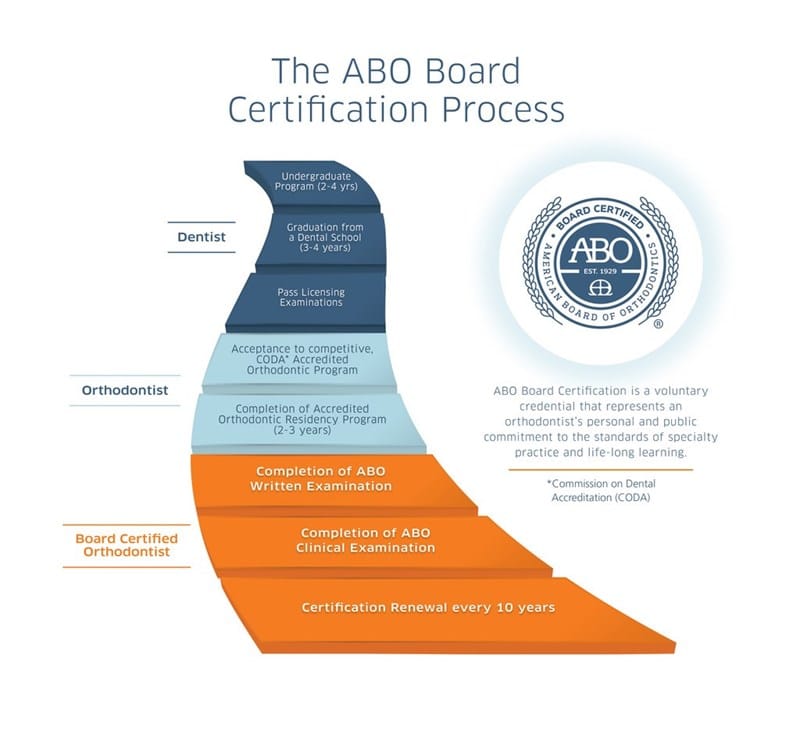What Is a Board-Certified Orthodontist?
Not all orthodontists are board-certified. While every orthodontist must complete advanced training and obtain a license to practice, only a portion choose to go a step further and pursue board certification through the American Board of Orthodontics (ABO). This rigorous, voluntary process reflects a deep commitment to delivering exceptional orthodontic care.
What Does Board Certification Mean?
Earning board certification from the ABO signifies that an orthodontist has:
Completed a demanding written and clinical exam process
Submitted in-depth case reports demonstrating high-quality treatment across a variety of orthodontic cases
Been reviewed and examined by a panel of expert examiners
Committed to staying current with the latest advances in orthodontics through continued education and periodic renewal
Board certification is a mark of excellence, proving the orthodontist’s knowledge, clinical judgment, and dedication to superior patient care.
How Many Orthodontic Certifying Boards Are There?
Just one. The American Board of Orthodontics (ABO) is the only board recognized by the American Dental Association (ADA) for the specialty of orthodontics. Founded in 1929, the ABO is also the oldest specialty board in dentistry, with a mission to promote the highest standards in orthodontic treatment through education and certification.
Why Do Orthodontists Pursue Board Certification?
Though it is not required, many orthodontists choose to become board-certified to:
Demonstrate a commitment to excellence in orthodontic care
Show mastery in diagnosis, treatment planning, and clinical execution
Stay on the leading edge of developments in the specialty
Provide patients with the assurance that they meet the highest standards in the profession
Achieving board certification is a clear signal that the orthodontist values continuing education, accountability, and optimal results for every patient.
What Does the ABO Certification Process Involve?
The path to board certification includes multiple steps:
Written Examination
A comprehensive exam of 240 questions that covers every aspect of orthodontic theory and practice.Clinical Examination
The orthodontist presents a selection of treated cases, complete with records and outcomes, to demonstrate consistent excellence in patient care.Oral Examination
A panel of ABO examiners interviews the candidate to assess knowledge, problem-solving skills, and clinical judgment.Ongoing Renewal
Board certification is time-limited. Every 10 years, orthodontists must complete renewal requirements to maintain their status, continuing their commitment to the highest level of care.
To learn more about the American Board of Orthodontics, click here.
